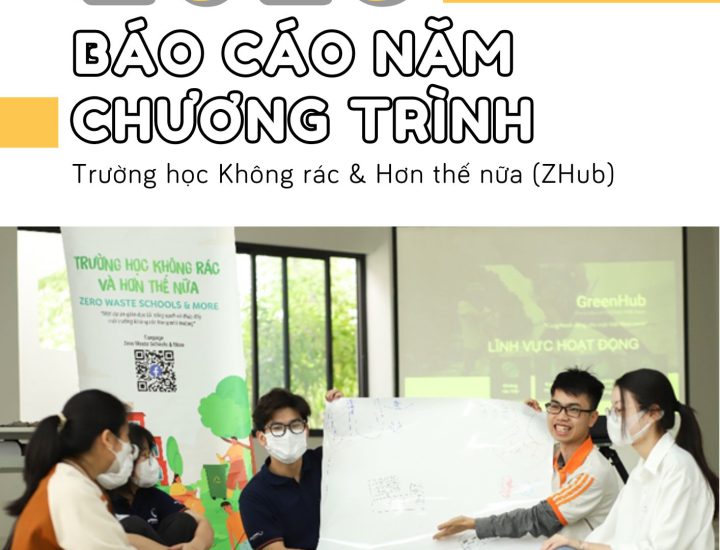GreenHub/GreenBays Project: Styrofoam situation in Bai Tu Long National Park and GreenHub’s effort to deal with this issue in Quang Ninh province
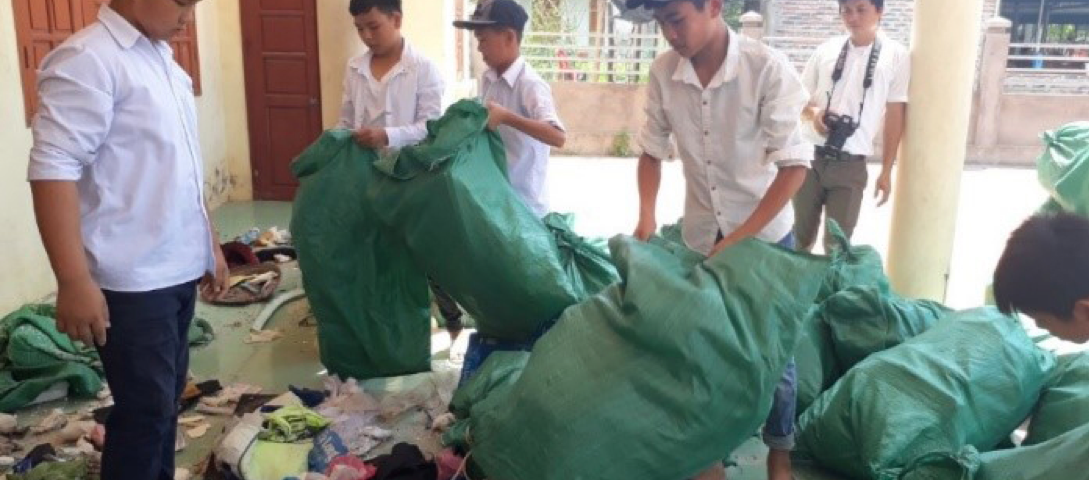
By: hoa.tran@greenhub.org.vn
Introduction of Bai Tu Long National Park (NP)
Bai Tu Long National Park in Quang Ninh province was established under the Prime Minister’s Decision No. 85/2001 / QD-TTG of June 1st, 2001. The total area of the National Park is 15,783 ha, of which the sea area is 9,658 ha, the remaining 6,125 ha is the area of floating islands. The buffer zone of the National Park is 16,534 ha, located on 5 communes: Van Yen, Minh Chau, Ha Long, Ban Sen and Quan Lan. Population in the buffer zone is 24,141 people. In the area of Bai Tu Long National Park boundary, there are 109 aquaculture households in aquaculture areas as planned. These are the households that are permitted by the management board to develop their livelihoods and increase incomes.
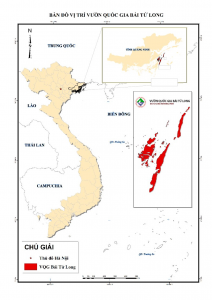
Aquaculture activities in Bai Tu Long bay and effort to restrict using styrofoam in floating cages and rafts
At present, the aquaculture households in Bai Tu Long NP are mainly mollusk (clam) using mainly plastic and styrofoam materials, (used as protection and nursing cages). Recently, some households have used Cement ships for protection work. There are 50 protection rafts in which 35 raft house (area of each cage is 40 m² using about 40-50 Styrofoams with the size of 1m x 80cm and 15 cement ships. There are 100 nursing rafts (each cage uses 10 styrofoams with the size of 60cm x 40cm.
Ba Mun island, Minh Chau commune is in the core zone of the NP. Due to the geographic location, households in the Minh Chau commune mainly catch fish, there are only 03 households cultured, mainly clams, come, oysters. A total number of styrofoams of 3 households are about 330 floats, half of the buoys are 70cm * 50 cm, the other half is 2m * 1m.
In 2016, after the first coastal clean-up co-organized by Centre of Supporting Green Development (GreenHub), International Union of Nature Conservation (IUCN) and partners, the Ha Long City People’s Committee issued Decision No. 349/TB-UBND banning the use of polystyrene in floating structures in Ha Long Bay. Continue this effort, Quang Ninh province people’s committee issued the Decision No. 4760 / UBND-NLN1, dated 3 July 2017, on restricting the use of foam buoys and materials in aquaculture to affect the environment in the province. According to this decision, management Board of Bai Tu Long National Park has conducted propaganda for people involved in aquaculture activities in the region on the harm and impact of the use of foam buoys in aquaculture. Besides, when people participate in aquaculture in the NP, there will be a license from the Park. Early 2018, people involved in aquaculture must sign a commitment to “protection and sustainable aquaculture within the boundary of Bai Tu Long National Park” in a statement that “restricts the use of styrofoam in aquaculture activities”
Artwork from plastic and Styrofoam waste
From 29th, May to 8th, June 2018, GreenHub co-organize with IUCN and partners the program of ‘Artwork from plastic and styrofoam waste- I love sea and island – Born to be wild’. The program is organized in Minh Chau commune, including coastal clean-up, trash sorting training, and art performance.
About 100 participants (including pupils in Minh Chau school) have involved in the coastal clean-up in1 hour and collected 141.5 kg of inorganic waste.

(Source: GreenHub)
On the job trash sorting training
The waste was used to create very meaningful artworks which attracted a lot of tourist and local people to aware of Styrofoam waste and impacts of plastic/polystyrene to marine animals.

(Source: IUCN)

Artwork from Styrofoam and plastic bottles
(in the right: Sea turtle struggling in the trash, try to escape from them)
Compositions of the waste are shown in the following charts:
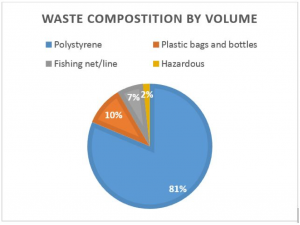
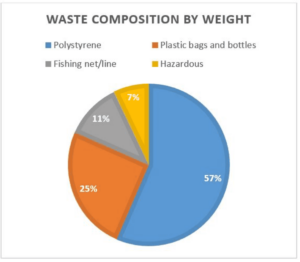
As we can see, although there are decisions to restrict using the Styrofoam in floating aquaculture cages/rafts at both city and province levels, significantly is only 3 aquaculture households are in Minh Chau commune, however, the polystyrene is still more than a half of the total waste (both by volume or by weight).
Ba Tu Long NP management board plans to review using Styrofoam in the aquaculture activities and increase the communication program for polystyrene restriction. However, we find that the aquaculture farmers need technical and financial support, guideline and feasibility solutions. GreenHub, IUCN, and our partners continue to accompany with local government and communities in this issue.

